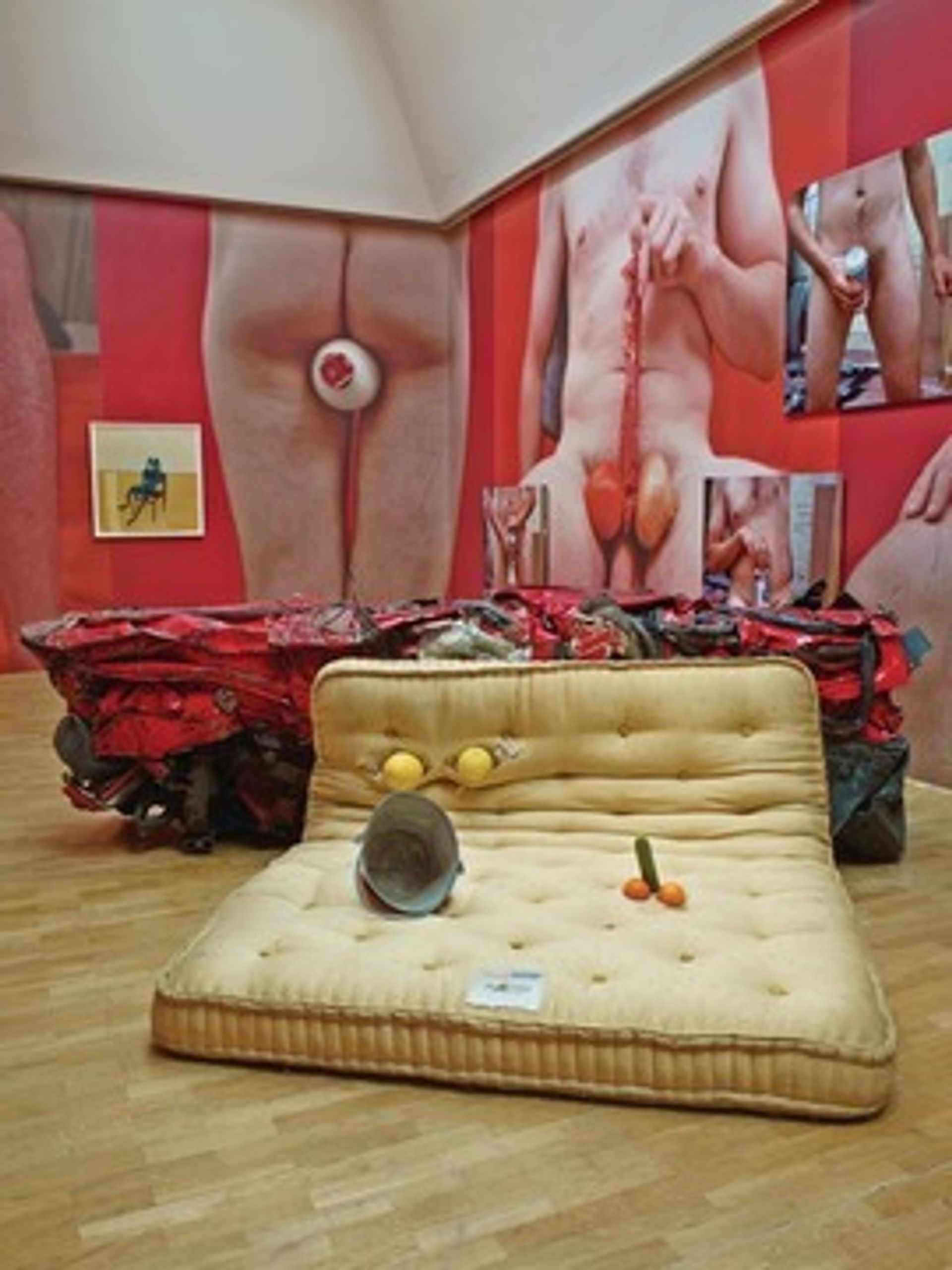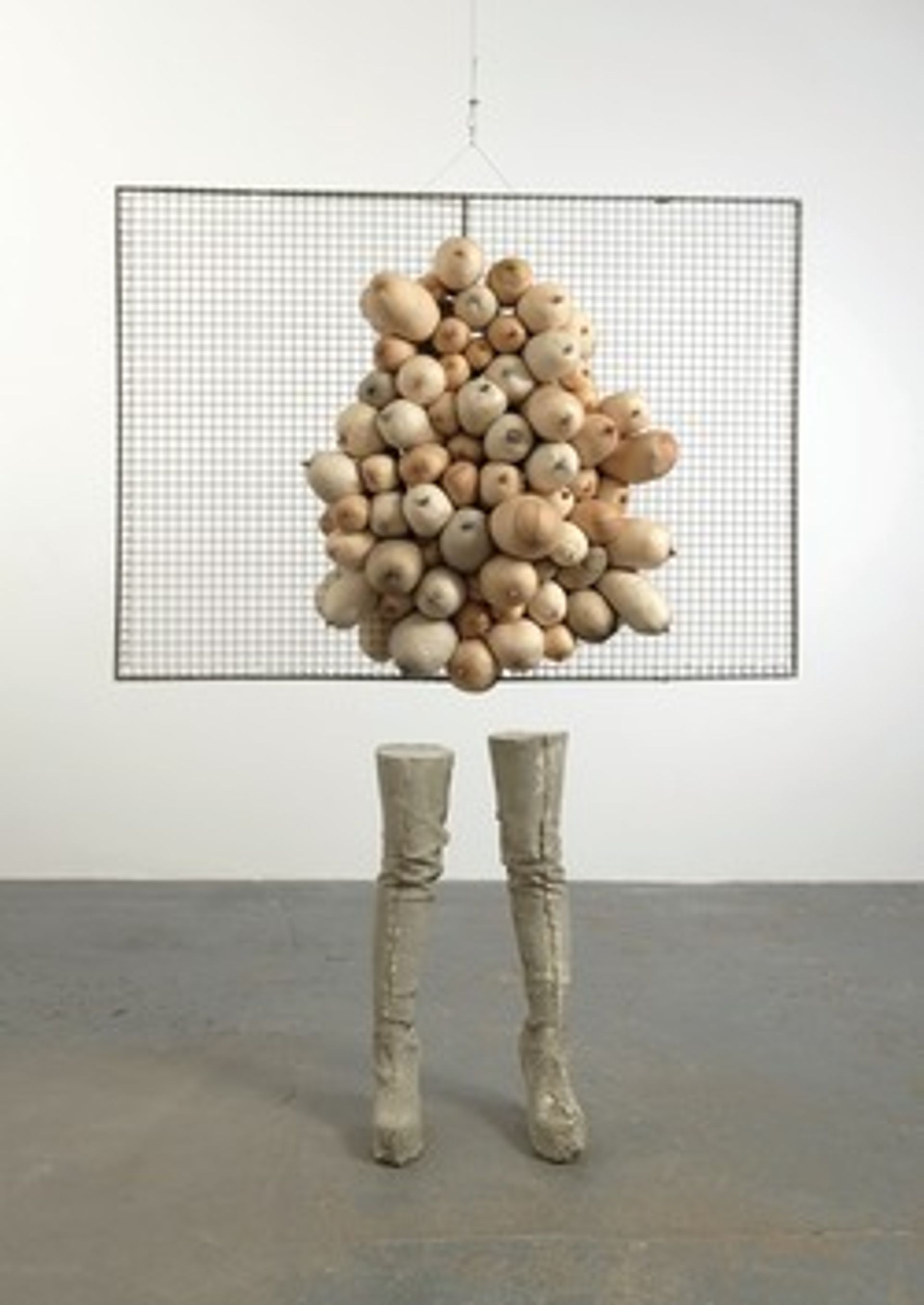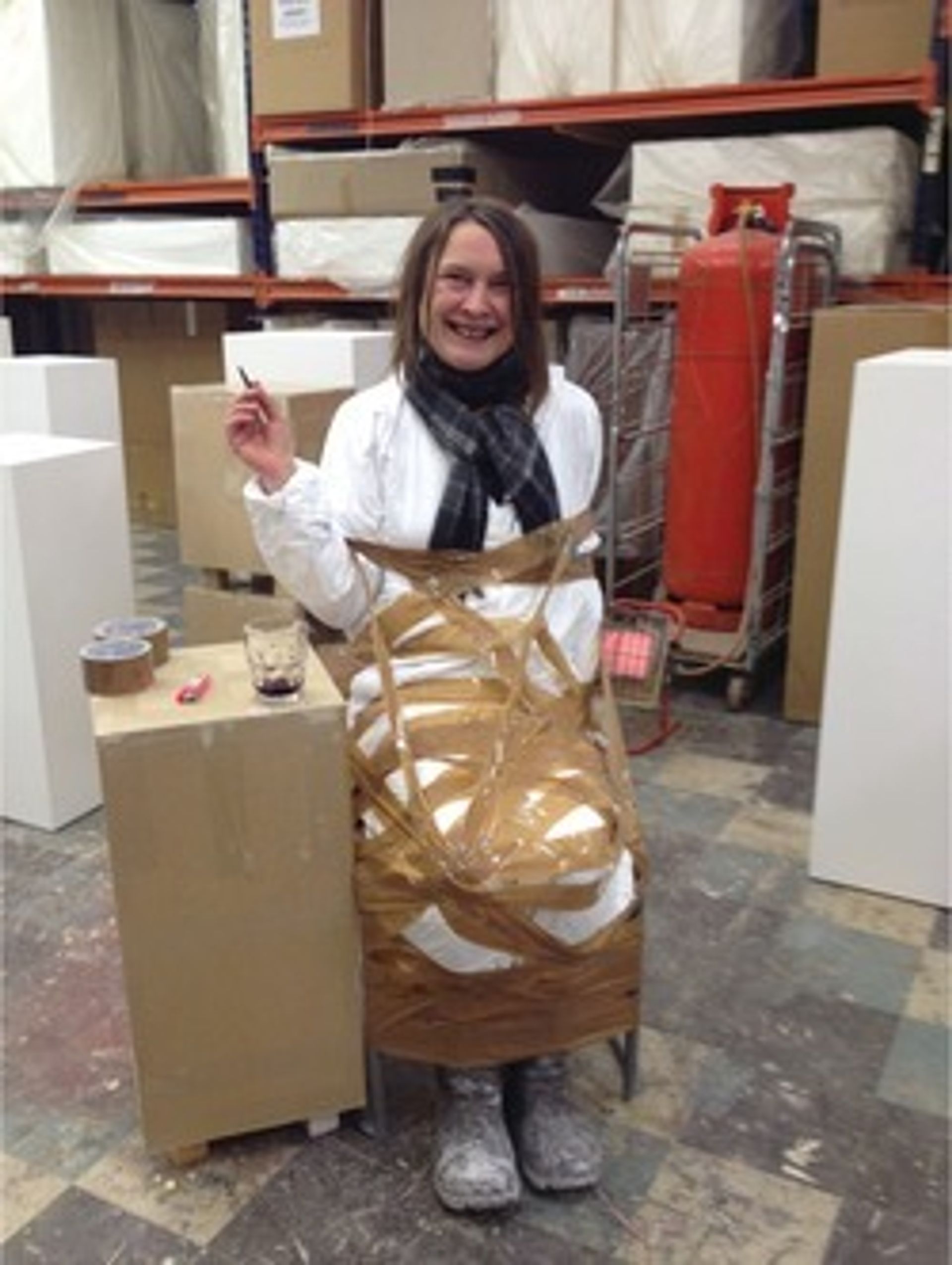Sarah Lucas, who is occupying the British pavilion this year, may be a key member of the Young British Artists (YBA) generation who took part in the now-legendary “Freeze” exhibition organised by her Goldsmiths peer Damien Hirst in 1988, but unlike many of her more high-profile artist contemporaries, she has always ducked beneath the celebrity radar. Several years ago, she even declined a nomination for the Turner Prize.
While Lucas may be reticent, her work is anything but. Spanning sculpture, photography and installation, it makes irreverent and often bawdy use of everyday, readymade objects—furniture, food, tights, toilets and cigarettes—as well as cast plaster and bronze to make lewd puns and to conjure up body parts, while simultaneously grappling with big, serious themes of gender politics, sex and death.
The Art Newspaper: You’ve staged some substantial exhibitions in the past, but the British pavilion at the Venice Biennale is a major show: how do you feel about it?
Sarah Lucas: I haven’t done that many, actually. I’ve kept big shows very much at arm’s length, with just the occasional foray, because I don’t make big work, generally speaking, and I don’t like having it hanging over me that I’ve suddenly got to start thinking: “How am I going to fill up this space? How am I going to make that work?” That’s like a different job to the one that I really wanted to do. The biggest foray I ever made was the Whitechapel Gallery show [in London, 2013], which for me was a big show—the most amount of space I have ever had to deal with at one time. I thought that the Whitechapel might be my pinnacle and it turned out to be a warm-up act. But now I’m getting used to the idea and I’m not as daunted as I might have been. The British pavilion is not as big as the Whitechapel in terms of the sheer amount of space, but it’s big in terms of attention and expectation. I was surprised to be asked; I absolutely didn’t see it coming. I was not going to do [a show this year], whatever it was, but then they asked me and I did make an exception. Then I thought: “Aaaargh. What am I actually going to do?” But it’s shaped up quite well, I think.

Do you see yourself as representing Britain?
I do. I do take it on, and I do love it. At the same time, it is a very pro-European show for me, because I am a pro-Europe British person. We don’t live in a nationalistic world any more; that’s just ridiculous. But the things that are good about here—the old Union Jack, the Queen—I can promise you that they are all in there.
So there are specific references to Britishness?
What I would like to do is represent Britishness, European-ness and all of it. I’m taking on everything, including my personal worries and my conversation with my peers. Everything that has crossed my mind about what this means to do, I hope that I’ve covered it.
Then there is the whole matter of Venice itself as a unique place. Does your show respond to this?
It’s going to be very, very Casanova, and very, very Bernini. It is a dessert, in a Bernini style: hardcore crème anglaise with meringues. That’s not the whole story but it is the basis of things. It’s very, very Venetian, and English too.
Are you making entirely new work?
All the work is being made specially. You’ll recognise lots of elements in it, whether it’s toilets or cigarettes, or cast plaster people. It’s a classic Sarah Lucas show but it’s all absolutely brand new. I could never have done it that way before now. It’s a proper sculpture show and it’s a step on for me in all sorts of ways: the sculptures and my thought processes and how one thing leads to another have really developed and moved on, in quite a profound way. I’m very excited about it, and it couldn’t have happened any sooner.

You showed a series of bronze “Nuds” at the last Venice Biennale. Will there be any bronzes this time?
I do have some bronzes in this show, which I’m making down at Pangolin [the foundry in Stroud, Gloucestershire], but they’re not just bronzes in the same way as the others were. I’m doing them black and not shiny, and they also involve furniture in cast bronze and also some concrete. Then I’m doing some other things at the foundry in painted resin. For the last Biennale, I was invited quite late and so we had to work really fast and pull out all the stops, which was great, because it gave me no time to hesitate. I just thought: “OK, let’s do it!” It had to be in bronze because it had to be outdoors—it’s not my usual material, but I’d been waiting for the right project with the foundry. Before the last Biennale, I’d only done one or two odd things with them. Then, that opened the door to the works in this show. But I didn’t want this show to be entirely a foundry show with everything cast in bronze, which is why I have launched into doing my own plaster casting as well.
Are you making any work in situ?
I wouldn’t like to say. The work doesn’t get finished until the moment you hang the show. It’s only at that precise moment that I develop the relationship between the sculptures and their respective presentations: I can’t finish it until then and I can’t anticipate what happens then. It has to be done in real time, in the real situation.

You’ve always been a very hands-on artist, but the nature of these materials must mean a new departure into working with more collaborators and assistants.
All art is collaboration—you can’t do it without collaboration. But because we live in a world of focusing on these heroes, these personalities, these celebrities, the sense of the collaboration doesn’t really get a look-in. This is a dimension that is incredibly important to me and it’s really obvious in this show. There is nothing whatsoever that is impersonal about this project; it is entirely personal. Being here [in the studio], being at the foundry—every person working on this [is a] dear friend and that’s the way we do it. That ethos is probably the most important thing in my life, and I don’t see why it shouldn’t be the most important thing in this show.
• Sarah Lucas (commissioned by the British Council), British pavilion in the Giardini, 9 May-22 November. For details, visit www.britishcouncil.org/visualarts

Biography Born: 1962, London
Education: 1983-84 London College of Printing 1984-87 Goldsmiths College, London
Lives and works: Suffolk and London, UK
Represented by: Sadie Coles HQ, London; Barbara Gladstone Gallery, New York; Contemporary Fine Arts, Berlin
Selected solo shows: 2014 Tramway, Glasgow 2013 Whitechapel Gallery, London; Secession, Vienna 2005 Kunsthalle Zurich 2000 Freud Museum, London 1993 The Shop (with Tracey Emin) 1992 City Racing, London
Selected group shows: 2013 “The Encyclopaedic Palace”, Venice Biennale 2004 “In-A-Gadda-Da-Vida”, Tate Britain, London 1997 “Sensation”, Royal Academy of Arts, London 1993 “Young British Artists II”, Saatchi Collection, London 1988 “Freeze”, Surrey Docks, London


